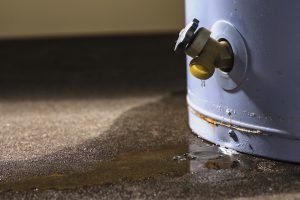 A traditional water heater lasts for 10 to 12 years. With regular maintenance and proper repairs, you can extend the life of your unit and help it run more efficiently. Many homeowners aren’t familiar with water heater maintenance and don’t consider it a priority until the flow of hot water stops or a leak appears. One of the most important aspects of regular tank maintenance is clearing out sediment that’s settled at the bottom of the tank.
A traditional water heater lasts for 10 to 12 years. With regular maintenance and proper repairs, you can extend the life of your unit and help it run more efficiently. Many homeowners aren’t familiar with water heater maintenance and don’t consider it a priority until the flow of hot water stops or a leak appears. One of the most important aspects of regular tank maintenance is clearing out sediment that’s settled at the bottom of the tank.
What is water heater sediment?
Overtime, your water heater accumulates sediment and mineral buildup that naturally comes from your fresh water supply. While the sediment isn’t harmful to the water, it can cause strange noises, leaks, cold showers and might overall shorten the lifespan of your tank. The amount of sediment buildup depends on the mineral makeup in your local water.
It’s recommended to have the sediment flushed from your tank each year to keep the unit running properly. It’s possible to flush the unit yourself, but a professional plumber can also complete the job, saving you from the risk of flooding your home or damaging the water heater.
How to flush water heater
To begin, ensure the water heater is turned off to stop any more water from flowing into the tank. Attach a hose to the drain valve of the water heater and rest the other end of the hose near a drain or large bucket so the water can flow out safely.
Once the hose is in place, open the pressure relief valve and a single hot water spigot inside your home. Flush the tank of sediment by closing the pressure relief valve then opening and closing the cold water supply lever numerous times. When the draining water runs clear, the sediment has been flushed from the tank.
Close the drain valve and disconnect the hose. You’ll want to wait about one hour before using the water supply inside your home to give the tank a chance to refill with water. Complete this task once a year or schedule it to be done by a professional plumber. By removing the sediment, you can extend the life of the unit and your family will enjoy a continuous supply of hot water.
Signs of sediment in water heater
If you’ve just moved into a new home or can’t recall the last time your water heater was serviced, there are some common warning signs that sediment has settled in your tank.
- Minimal supply or no hot water
- Takes extended period of time for water to warm
- Popping or clicking noise coming from tank
- Water supply has red or brown tint
- Water has a foul odor
If you notice any of these problems, call your local plumber to have the water heater inspected. It’s better to catch a small problem now rather than wait for a large-scale emergency issue to arise.
For homeowners dealing with a local water supply with heavy mineral content, having a water filter installed can help alleviate some of the buildup and extend the life of the unit.
